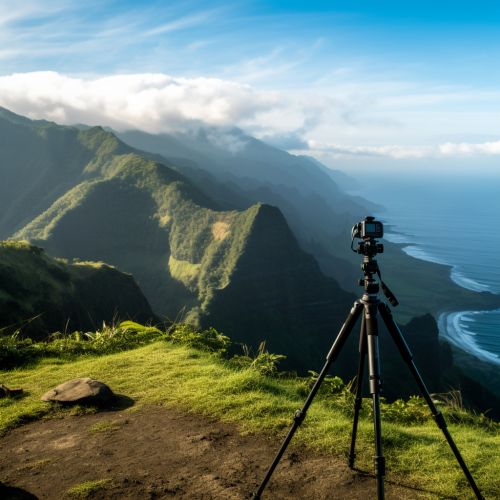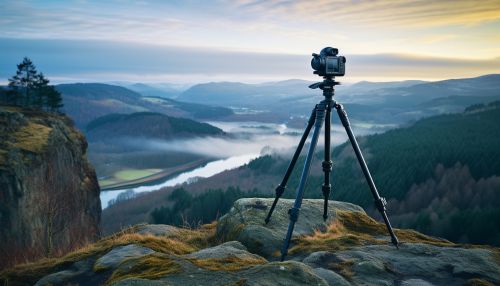Travel documentary
Overview
A travel documentary is a type of film or television program that explores various locations, cultures, and experiences from around the world. These documentaries aim to educate and inspire viewers by showcasing the beauty, diversity, and complexity of our planet. They often focus on a particular country or region, offering in-depth insights into its history, culture, and natural wonders.


History
The history of travel documentaries dates back to the early days of cinema. The first travelogues, as they were then known, were silent films that depicted exotic locales and cultures. These films were often shown in theaters as part of a larger program, serving as a form of virtual tourism for audiences who could not afford to travel themselves.
The advent of sound in cinema brought a new dimension to travel documentaries. Filmmakers could now incorporate local music, languages, and ambient sounds, creating a more immersive viewing experience. This period also saw the rise of the travel lecture film, a genre that combined travel footage with a live narration by the filmmaker.
In the post-World War II era, travel documentaries began to appear on television. Series like Alan Whicker's "Whicker's World" and David Attenborough's "Zoo Quest" brought exotic locations and cultures into living rooms around the world. These shows were immensely popular, sparking a boom in the travel documentary genre that continues to this day.
Production
The production of a travel documentary involves several key stages, including pre-production, production, and post-production.
In the pre-production stage, the filmmakers conduct extensive research on the locations they plan to visit. This research can involve reading books and articles, consulting with experts, and even conducting preliminary visits to scout filming locations. The filmmakers also develop a script or outline for the documentary, although this can often change during the course of filming.
During the production stage, the filmmakers travel to the chosen locations and capture footage. This can involve a range of activities, from interviewing locals and experts to filming natural and cultural landmarks. The filmmakers must also navigate various logistical challenges, such as obtaining filming permits and dealing with unpredictable weather conditions.
In the post-production stage, the filmmakers edit the footage into a cohesive narrative. This involves selecting the best shots, arranging them in a logical order, and adding narration, music, and other audio elements. The filmmakers may also incorporate archival footage, graphics, and other visual elements to enhance the storytelling.
Styles and Techniques
Travel documentaries employ a variety of styles and techniques to engage viewers and convey their narratives.
One common technique is the use of a presenter or narrator, who guides the viewer through the documentary. This presenter can be an expert in the subject matter, a celebrity, or even a local resident. The presenter's role is to provide context, share personal insights, and interact with the subjects of the documentary.
Another technique is the use of stunning visuals to capture the beauty and diversity of the locations. This can involve wide shots of landscapes, close-ups of wildlife, and aerial shots captured with drones. Filmmakers may also use time-lapse photography to show the passage of time, or slow-motion footage to highlight specific details.
Travel documentaries also often incorporate elements of storytelling. This can involve following a specific narrative arc, such as a journey or quest, or exploring a particular theme, such as the impact of tourism on local communities. The filmmakers may also use interviews, personal anecdotes, and historical context to enrich the narrative.
Impact and Influence
Travel documentaries have a significant impact on both individuals and societies. On a personal level, they can inspire viewers to explore new places, learn about different cultures, and develop a greater appreciation for the world. They can also provide a form of escapism, allowing viewers to experience the thrill of travel from the comfort of their own homes.
On a societal level, travel documentaries can promote cultural understanding and global awareness. By showcasing the diversity and complexity of our planet, they can challenge stereotypes, broaden perspectives, and foster empathy. They can also highlight important issues, such as environmental conservation and social justice, encouraging viewers to engage with these topics and take action.
However, travel documentaries can also have negative impacts. They can contribute to over-tourism, as viewers flock to the locations featured in the films. They can also perpetuate harmful stereotypes and misrepresentations, particularly when they depict cultures and communities in a simplistic or exoticized manner.
Future Trends
The future of travel documentaries is likely to be shaped by several key trends. One such trend is the rise of virtual reality (VR) and augmented reality (AR) technologies. These technologies can provide immersive experiences that go beyond traditional screen-based viewing, allowing viewers to explore virtual representations of real-world locations.
Another trend is the growing emphasis on sustainability and responsible travel. As awareness of environmental and social issues increases, travel documentaries are likely to focus more on these topics, highlighting the impacts of tourism and promoting sustainable practices.
Finally, the democratization of filmmaking tools is enabling more people to create their own travel documentaries. With the advent of affordable cameras, editing software, and online distribution platforms, anyone with a passion for travel and storytelling can share their experiences with a global audience.
